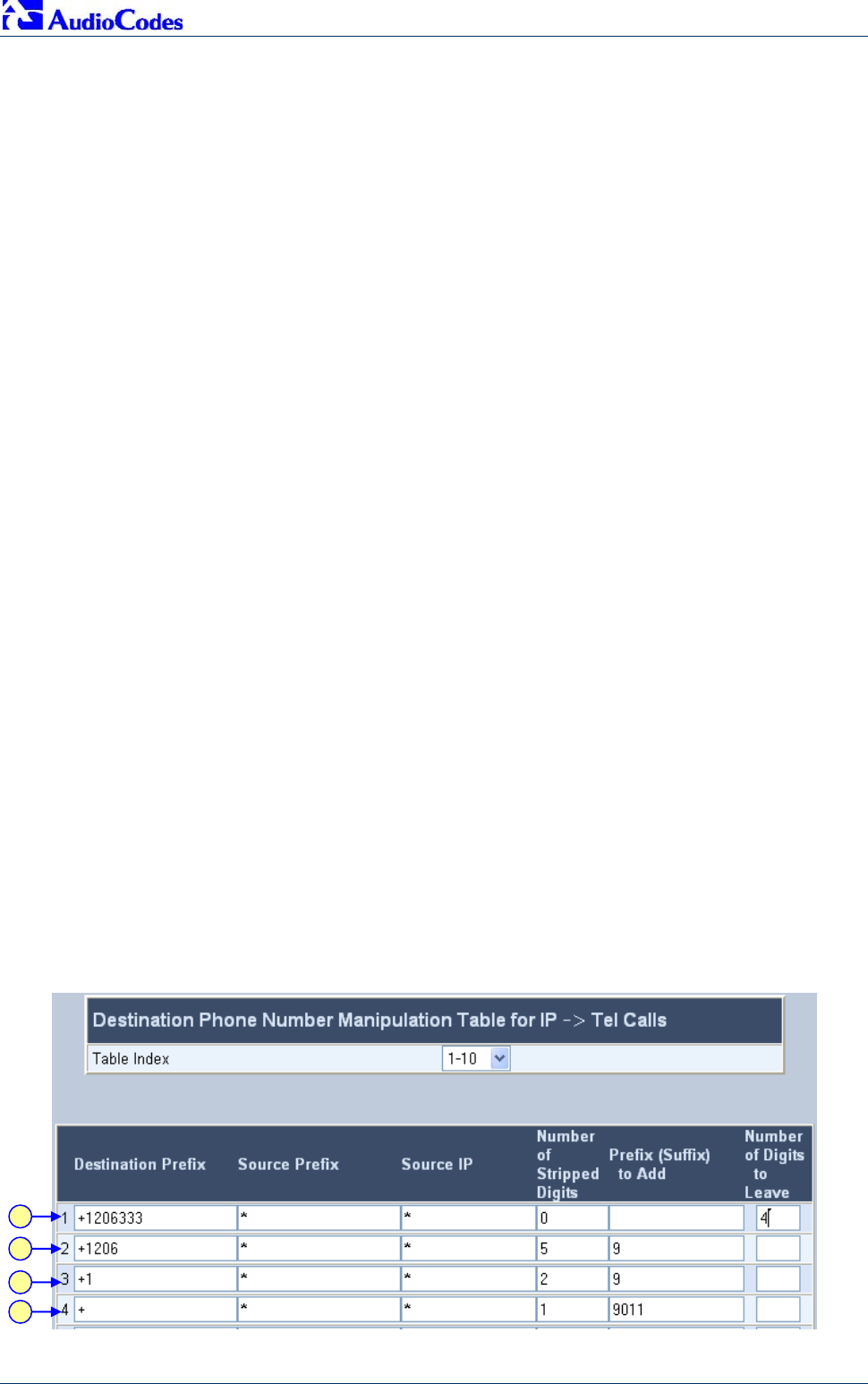
MP-11x & Microsoft Office Communications Server 2007
Quick Installation Guide 26 Document #: LTRT-26301
3.3.2.4.2 Number Normalization Examples
Two examples are provided below for number normalization. The examples are based on the
following assumptions: a PBX with prefix (local) number 333 and a 4-digit extension number that
begins with the digit 1 (i.e., 1xxx); National area code 206; International code 1.
Modifying E.164 Numbers to PBX Format for Outbound Calls: Outbound calls refer to
calls made by Office Communications Server 2007 users (OCS clients) connected through
IP to the Office Communications Server 2007.
1. Local calls within the PBX: The caller dials only the last four digits (e.g., 1212). Office
Communications Server 2007 translates (normalizes) the phone number into an E.164
number format: +12063331212 (where +1 is the country code, 206 the local area code,
and 333 the PBX prefix number). The gateway's Manipulation table is configured to
send only the last four digits to the PBX (i.e., 1212).
2. National calls to the same area code: The caller dials 9 for an external line and then
dials a 7-digit telephone number (e.g., 9-555-4321). Office Communications Server
2007 translates (normalizes) the phone number into an E.164 number format:
+12065554321 (where +1 is the country code, 206 the local area code, 5554321 the
phone number). The gateway's Manipulation table is configured to remove (strip) the
first five digits and add 9 as a prefix to the remaining number. Therefore, the gateway
sends the number 95554321 to the PBX, and then the PBX sends the number 5554321
to the PSTN.
3. National calls to a different area code: The caller dials 9 for an external line, the out-
of-area code, and then a 7-digit telephone number (e.g., 9-503-331-1425). Office
Communications Server 2007 translates (normalizes) the phone number into an E.164
number format: +15033311425 (where +1 is the international code, 503 the out-of area
code, 3311425 the phone number). The gateway's Manipulation table is configured to
remove (strip) the first two digits (i.e., +1), add then add 9 as a prefix to the remaining
number. Therefore, the gateway sends the number 95033311425 to the PBX and then
the PBX sends the number 5033311425 to the PSTN.
4. Making international calls: The caller dials 9 for an external line, the access code for
international calls (e.g., 011 for the US), the country code (e.g., +44 for the UK), the
area code (e.g., 1483), and then a 6-digit telephone number (e.g., 829827). Office
Communications Server 2007 translates (normalizes) the phone number into an E.164
number format: +441483829827 (where +44 is the country code, 1483 the area code,
829827 the phone number). The gateway's Manipulation table is configured to remove
the first digit (e.g., +), and add the external line digit (e.g., 9) and the access code for
international calls (e.g., 011 for the US) as the prefix. Therefore, the gateway sends the
number 9011441483829827 to the PBX and the PBX, in turn, sends the number
011441483829827 to the PSTN.
The configuration of the above scenarios is shown in the figure below:
Figure 3-13: Phone Number Manipulation Table for IPÆTel Calls
1
2
3
4


















